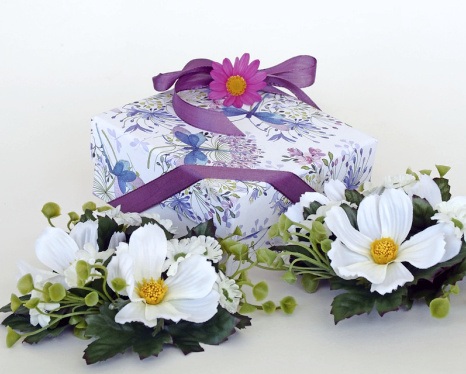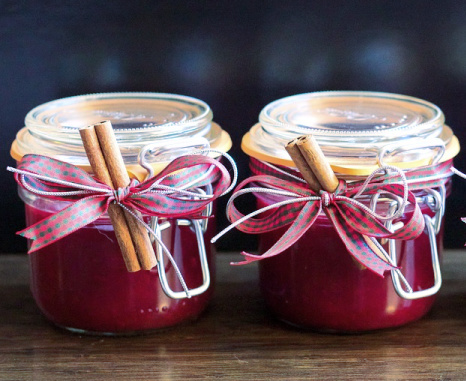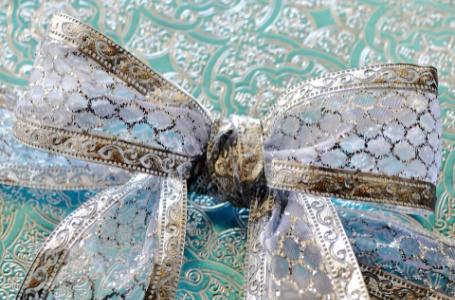Beginners Guide to Ribbons
 Ribbons are an excellent way to add a touch of elegance and style to any outfit. They can be used for holding back hair, as decoration on clothing or gift packages, as party favors at wedding receptions, and they may even be used in religious ceremonies. Ribbons have been around since ancient Rome when soldiers used them to tie off their sandals. Today ribbons come in many varieties, with different material types being commonly used, including silk, cotton, polyester, and more! This article will cover all you need to know about ribbons to understand what type is right for your needs.
Ribbons are an excellent way to add a touch of elegance and style to any outfit. They can be used for holding back hair, as decoration on clothing or gift packages, as party favors at wedding receptions, and they may even be used in religious ceremonies. Ribbons have been around since ancient Rome when soldiers used them to tie off their sandals. Today ribbons come in many varieties, with different material types being commonly used, including silk, cotton, polyester, and more! This article will cover all you need to know about ribbons to understand what type is right for your needs.
One way to simplify your life is by utilizing ribbons in a decorative sense or wrapping up gifts. Among other options, metallic ribbons can give you a chance to try something new and colorful. Cloth ribbons are made from various natural and synthetic fibers, such as silk, cotton, and polyester. The word “ribbon” has many meanings, including a long, narrow strip of cloth or paper used for decoration or as an award. Hundreds of cultures use ribbons for a range of purposes, principally hair decoration and as ornamentation. Several key fabrics are used to make ribbons, including satin, organza, sheer, silk, velvet, and grosgrain.
Materials used for Ribbons
Ribbons come in a variety of colors and materials, which makes them versatile for any occasion. Ribbons are often used to keep hair out of a person’s face or decorate banisters, depending on the material they are made from. Ribbons can be made from various textiles like lace, satin, grosgrain, velvet, and taffeta. They can also be designed in tartan or printed with gingham patterns. Different types of ribbons are available for wholesale in a variety of finishes. You can find a variety of ribbons in different materials and finishes to suit your packaging needs. Depending on the company and what impression they want to convey, some companies may opt for one material over another if the ribbon is used for advertising purposes.
Crafts out of Ribbon
Ribbon flower: Cut six to eight ribbons that are the same length, with each ribbon being 4 to 6 inches long. The larger the ribbon, the longer and wider the resulting flower. To create a fuller flower, use more strips.
Cut ribbons will always form two pieces of material that resemble flowers. Some hot glue on the center of the ribbon, then fold each side of the ribbon in and stick it together. Use satin and patterned ribbons so that the shiny/decorated side is facing outward.
Arrange your petals one on top of the other to align their centers, but each petal is offset. Spread a thin layer of glue on the back of each petal, then lay them in an alternating position, so they overlap. Stacking the ribbons without overlapping will ensure your arrangement is as full as you’d like it to be.
To end your flower, spread out the petals slightly to make it look fuller. Take a few minutes to adjust the petal placement and fabric length before applying any more glue.
Adding a ribbon flower to any accessory or gift will take it up a notch. You can also use these ribbon flowers for decorating your house using ribbons. These ribbons look particularly cute.
And many other craft things you can make from the ribbon.
Types of Ribbon
Satin Ribbon: Ribbons have a glossy finish made from natural or synthetic fibers such as silk, cotton, or nylon. Sometimes the shiny surface is on one side, and sometimes it’s not. The one-sided satin ribbon features a matte finish on the back of the ribbon. You would choose a double-sided ribbon, such as for a sash or some other project with both sides visible it is up to you for what you want. Satin ribbons are available in various widths like other ribbons and come in solid colors or printed patterns. These satin ribbons are an inexpensive and versatile option, which can be found in various colors.
Taffeta Ribbon: A ribbon is a woven fabric made from lightweight silk, rayon, or polyester with a wire running through the center. Most ribbons are woven to be light and translucent. With or without wire, ribbons have crisp edges that help them retain their shape. Silk taffeta ribbons are the most popular but hard to find. Rayon taffeta ribbon is also very pretty.
Brocade Ribbon: These are ribbons with designs woven into them. The textures and patterns make these popular materials for accessories, clothing, packaging, decorations, gifts, and celebrations. A ribbon can be made of various materials, but mostly it is a piece of fabric gathered and cut on the two sides. A ribbon’s thickness and design make it more prone to special projects like home décor. The ribbon was traditionally made on a loom, but now it is made on special machines.
And many other ribbons like Picot Edge ribbons, Grosgrain ribbons, Twill ribbons, Sheer & shimmery ribbons, Tulle ribbons, Velvet/chenille ribbons, Silk ribbons, Metallic ribbons, Curling craft ribbons/ poly ribbons, Jute/ burlap ribbons, Zari ribbon, Acetate Ribbon, etc.
Conclusion
If you want to start a craft project or need some new ideas for the holidays, have no fear. Ribbons are a great way to add charm and style to any gift or decoration. Check out our blog post on ribbons here for more information!

